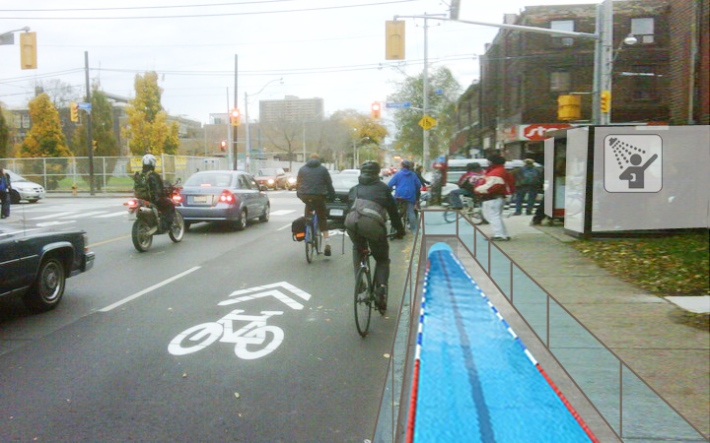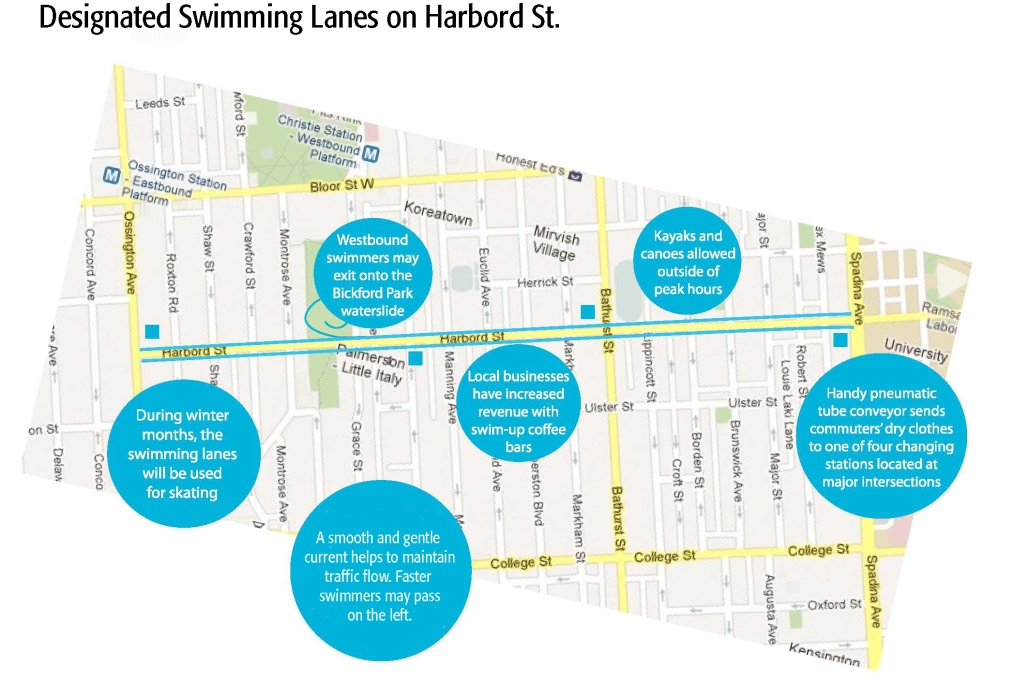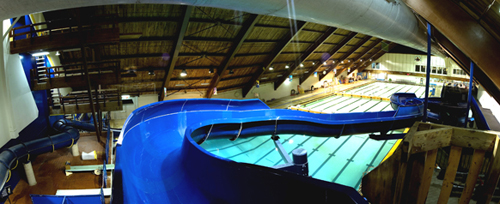The swimming lanes on Harbord Street in Toronto are the world’s most exciting new sustainable commuting pilot project, but you might not have heard of them, because, for now at least, they exist only in my imagination.
The lanes allow swimmers to travel 1.8 kilometers, or 34 city blocks, along the popular low-rise shopping and residential street, featuring parks, cafes, restaurants, and boutiques. Glass barriers separate the swimming lanes from bikes lanes and the sidewalk. You can enter or exit the water via gates at regular intervals along Harbord. The lanes are set just below street level, to allow swimmers to pass underneath north-south traffic through brightly-lit tunnels.
“It’s a great way to start the day,” says one fictional Toronto resident. “I send my work clothes ahead to the end of the line via the handy pneumatic-tube conveyors, grab a quick shower and change in the facilities provided, and then get on the bus headed downtown.”
In real life, I ride my bike along Harbord almost every day, and in my mind I see swimmers travelling along beside me. Young and old, breaststrokers and butterflyers, swimming through the city, stopping maybe for a coffee or a new tattoo. Sunlight shining down through the trees along the sidewalk, swimmers moving smoothly past traffic. There are no stoplights in the water.
“I lock up my bike on Ossington and swim right to school ,” a student from Harbord Collegiate might say.
In winter months, hypothetical Torontonians skate on the swimming lanes, although skaters aren’t able to travel the entire distance due to north-south traffic. Imaginary city planners are researching options to make skating commutes available.




















